
We were four who went. Two of us had been several times in the Northwest Territories, but never to Great Bear Lake.
We had dreamt of Great Bear Lake for many years. Untouched nature, crystal clear water with lots of fish, big fish. The lake holds a number fishing records. Several Lake Trouts over seventy pounds have been caught.
The lake is the world's ninth largest and is hidden away at the Arctic Circle in northern Canada. There are no roads up there so you have to fly. Either you can charter a plane, for example in Yellowknife, or try to find a scheduled flights up to the area.
After examining and comparing prices, we managed to find an acceptable solution. Price was a top priority. Two of the participants were students, my brother Simon and his childhood friend Andreas. We had contacted a fishing camp in the northern part of the lake. They could offer residual seats on their flights up to camp. We could also get access to the camp amenities, rent canoes, help with transportation to the starting point. In short, they offered to solve many of the logistical problems at a cost of about 3,000 canadian dollars. The price included flights from the city of Winnipeg in southern Canada. Winnipeg can be easily reached by regular flights from Europe.
We expected to not have to buy any special equipment. We intended to use what we already had. Fishing equipment, tents, sleeping bags, clothes, etc. that you can use in Swedish conditions are ideal. As shown in the pictures, it's no exclusive equipment we are talking about. Andreas dug up an Ambassadeur reel from the late 70's. Sure, we bought some extra lures in Winnipeg because the prices were good. But the food was the biggest expenditure item.
After a day in Winnipeg, it was finally time to fly up to the fishing camp. Early in the morning we met the other excited passengers at the airport. The plane, a Boeing 727, would make several stops at various fishing camps in the Northwest Territories. Our destination was the last. With stops the trip took about 6 hours. There were many Americans, some Canadians. They go up and fish for a week or two. They fish almost exclusively from a boat, guides are included.
At the camp hearty meals are served . Lodging is small comfortable cabins with varying number of beds, to suit different groups. In the evening there is an open bar by the fireplace. To go here and fish for a week is a real luxury. Life is comfortable and the chance to catch a dream fish is good. However, we were looking for a different experience.
The sea plane makes a sharp turn and drops steeply to land on the water. We are landing in a bay on the southeast side of a large island, Richardson Island. The island is one of the few in the area, that has a name.

It is named after Sir John Richardson who explored the area in the 1800s. From here we paddle about 20 km, through an archipelago like area, to the outlet of Camsell River.
The next day we reach outlet exhausted and with aching muscles, after a heavy paddling against the wind. I take one 8 pound lake trout on the first attempt. We catch fish on almost every cast. We get lake trout, pike and grayling. Out in the Great Bear Lake there is no pike. The water is too cold for the fish to thrive. But here at the outlet, warmer water from the lake systems Hottah- and Faber Lake makes it more pleasant for the pikes. We also catch a number of 2 pound graylings. They bite, much to our surprise, on large spoons and spinners like the Mörrum.
How do you prepare to paddle all day? Often there are also severe weather which makes the effort harder. The experience of the past times we’ve been out in a similar circumstances have shown, that it is impossible to cover long distances from the start. This is true no matter how hard we trained.
The stamina required to paddle hard for ten to twelve hours is gained after a week or so. We have never been able to afford the luxury of preparing us through a training camp filled with canoeing. Instead, we have focused on being in good general shape both cardio- and strength-wise. Weight training is recommended to avoid injuries during the first critical week. In particular strength in the arms, back and shoulders is important. If you are in good general shape from the start you can expect to multiply the time you can paddle a day. The longest distance we paddled in a day, was about 40 miles. We did this after having been out on the lake for two weeks.
On July 8:th, we break camp early in the morning, on an island off Richardson Island. The weather is good sunshine, light wind and about 15 degrees Celsius. The weather is especially important today because we are going out to Great Bear lake’s open water. We will paddle north along the shoreline and will no longer be protected by the islands in the archipelago-like area inside the Richardson Island. We have been warned of strong winds and big waves. Some say that Great Bear Lake is not suitable for canoeing at all, because the weather can be so unpredictible and violent. There is a some apprehension in the air when we start paddling out through the channel that the guides at Plummer’s fishing camp call “Action Alley”.
We decide to take a short break when we approach the mouth of the channel. We stop in a stony open area. We are about to experience the best fishing any of us have seen. The rocky shore plunges down to the depths. Somewhere down there are lots of fish, big fish 10-15 pounders. The fish bite hard and decisive on every throw. This one of the few times when we all four stands and fights fish simultaneously. When we summarize the catch, we have caught a total of 200 pounds. Andreas was the largest weighing 15 pounds. Perfectly acceptable for about 20 minutes of fishing.

The mouth of the channel is intimidating with its steep vertical cliffs with no opportunity go ashore. The lake is endless. It looks like a sea. In the horizon no land can be seen just haze. We are greeted by a cold breeze that testify that the water temperature is significantly lower out here. The water is very deep.
Charlton bay July 11. It is sunny and warm in the morning, more than 20 degrees Celsius, no wind. As we start to paddle a cold mist starts creeping in from the lake. It is a beautiful sight and Fredrik takes the opportunity to take some pictures of the phenomenon.

The fog is increasing and after a while visibility is becoming worryingly low. We keep an eye on the compass and stay close to the shoreline to avoid losing sight of land. As we paddle on, the wind picks up. The fog dissolves and turns into drizzle. The temperature has dropped dramatically in the last hour. It’s now getting really cold. Since it has become almost time for a lunch break and we want to put on our rain gear, we go ashore on an island. We are about to get a lesson in Great Bear lake’s infamous weather. The rain and the wind picks up even more. The temperature keeps dropping. It is now just a few degrees above freezing. In just a few hours we have gone from mid-summer to late autumn weather. We pull the canoes up on land. The waves have become so big that we are afraid they will take them. We cook lunch and take the decision to wait a few hours for the weather to calm down. We remain on the island for two days.

Unnamed island on July 13. The wind has now died down but the big swells continue to roll in. When they reach the shore they break in white foam. It does not look that dangerous once you are out from the shore.

But we realize that getting back on land could become problematic. We are getting impatient. We want to go. We all recognize that it is a dangerous combination. After lengthy considerations, we decide to give it a go. We want to try the conditions out on the water to be able to make a better assessment. Maybe it looks better if we get past the next point? On the map it looks like there are several good landing places if we want to stop. Fredrik and I take the lead out to the surf at cape. We have paddled a few thousand miles together. Simon and Andreas have paddled only a few times before we came here.
It is possible to paddle but sways precariously. The waves are so big that we lose sight of the other canoe in the troughs. The farther from shore you paddle the more peaceful are the big waves. It feels safer closer to shore. This paddle session is a short one. When we see a beach that looks like a good landing place, we decide to stop. At least we have gotten away from the island and a bit further on the map. As we approach the beach, we realize how difficult it will be to get ashore with dry feet. Meter high waves wash into the shore. With some luck we manage to maneuver to surf the waves and turning broadside at the last moment. We throw ourselves out of the canoes and pull them up quickly. Whew!
We face two more storms on this trip. The main problem is the big waves that form. They can persist long after the wind has died down. Another problem is the sea breeze that can be very strong. When we get too much headwind is hardly worth while to paddle. We simply waste too much energy per mile. The solution is to paddle at night when the sea is calmer.

The third week, we have decided to cover more than 130 miles. This is because we want to have a margin for further storms. We now have less time for fishing. Although we fish less, all of us get fish every day. We encounter a phenomenon whereby large quantities of fish gather in schools at the surface. We encounter these schools away from the shore, for example, outside the river mouth, in a bay or in a straight. The schools always seems to be the size ordered. Fishes are usually 6-8 pounds or 8-10 pounds. The fish bite on any bait we present spoons, wobblers, jigs or spinners. The choice of bait depends more on what you yourself like, than what works. I myself like the heaviest Mörrum spinner which I think is easy to cast. However, it has a tendency to be “chewed” and crumpled after awhile. Even large jigs tear when the fish always bite. However, we do not consider this to be a major problem.
Even between the schools, we always fish. If we decide to eat fish for a meal someone simply goes down and “pick up” a fish from the lake. It seldom takes more than ten minutes. Lake trout is a great eating. It is deep red in the flesh and with a great taste. Although we eat it almost every day we are not bored. We can vary the cooking because we have brought with us several basic seasonings as capers, garlic, tomato paste, chili powder, curry, parmesan, pesto, coconut milk, etc.
We eat fish with spaghetti, cous-cous, rice or mashed potatoes. Good food is important for the comfort and well-being on long trips like this. For breakfast we eat flavored oatmeal that is just mixed with water. In North America, this can be found in regular supermarkets in a variety of flavors blueberry, peach, cinnamon and sugar, apple, etc. Overall, we were very happy with the food. We could eat us full every meal. Nevertheless, we all lost 15-20 pounds in weight. We bought food in a supermarket. Four men and four weeks, the total cost of Can $ 348 about 2,000 Swedish kronor. The few days we did not eat fish, were the days we managed to shoot some hares. Hares can be hunted all year around, provided you have purchased a small game license. The authorities strongly recommend that you bring you arm in order to protect yourself against bears. There are bear attacks recorded every year.
The staff at the camp had been worried about us. Especially considering the last day’s raging storm. They had already planned to start looking for us if we did not come back in time for the flight back to Winnipeg. We were told that others had tried similar trips on the lake all had given up and the radioed back asking to be picked up by a plane. Many of the guides were skeptical that we, as Europeans and not accustomed to the local conditions, could do it. We chose not to be bring satellite phone, radio or GPS equipment. This meant, of course, an increased risk. If you want navigate with just a map and compass, you have to be able to handle that the compass shows about 40 degrees wrong, because the magnetic north pole is near. The pilot who dropped us off 250 miles away at Richardson Island wanted half jokingly half seriously to take a photo of us “that would be worth the money if we did not come back.”
What we ourselves thought everyone misjudged was that experience from Swedish conditions makes you feel at home in the Canadian wilderness. We are all familiar with being out in the Swedish outdoor. Simon and Andreas grew up in Jämtland and have been out a lot in the Swedish mountains. That experience was enough to do this tour.
We noted the weight of all the fish we caught. As we summarized it turned out that we had caught almost 2 tons of fish.
PS.
To save some time, I google translated the text from the swedish original. It is far from perfect english but gives the text an exotic foreign touch. If it is hard to understand or if you have any questions I can be reached at josun07@googlemail.com.
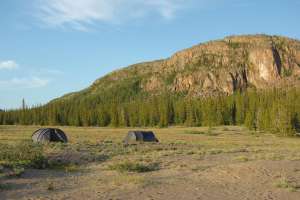
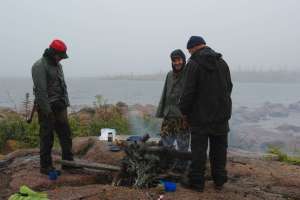

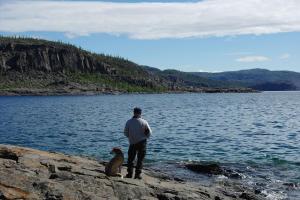
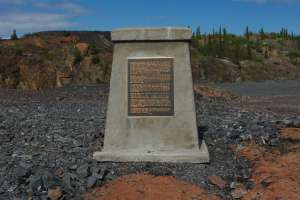
Mining history.
On May 16, 1930, Gilbert LaBine discovered a vein containing silver and pitchblende near this site. The discovery led to…..
<img src="https://paddlenorthwest.files.wordpress.com/2012/10/imgp0529.jpg?w=300" alt="Exploring the mining area.
As the area has been cleaned up, new prospecting has begun.width=”300″ height=”200″ class=”size-medium wp-image-122″ /> " Exploring the mining area.
As the area has been cleaned up, new prospecting has begun.”
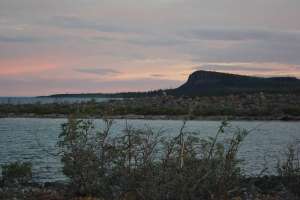
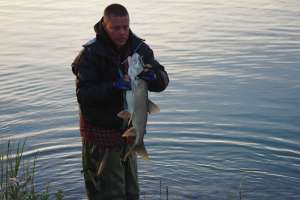

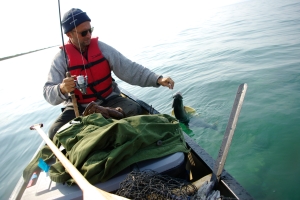
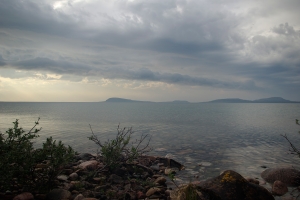
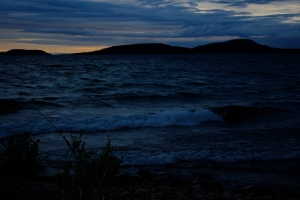
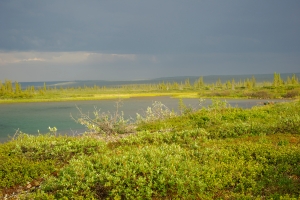
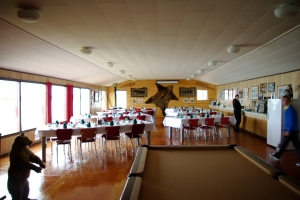
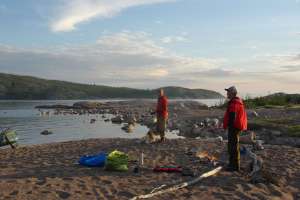
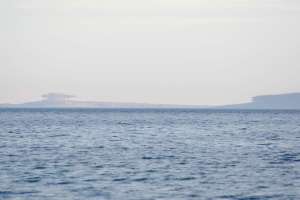
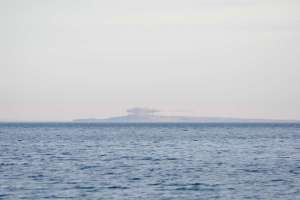
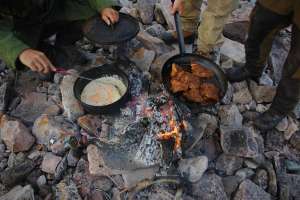
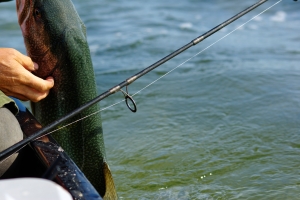
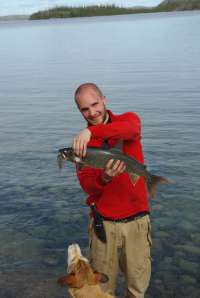
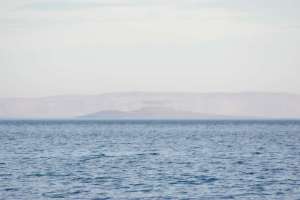
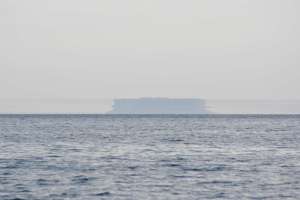

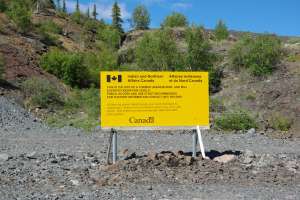
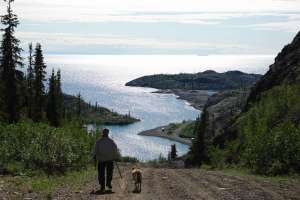
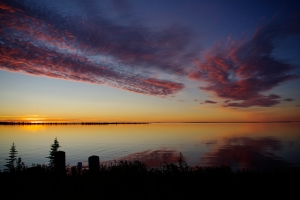
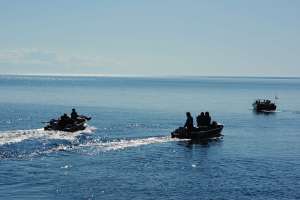
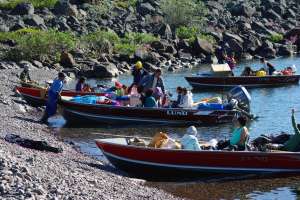
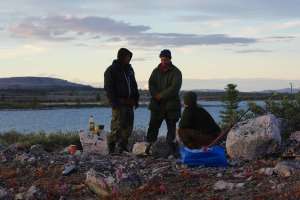
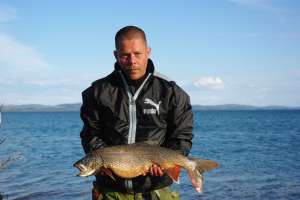
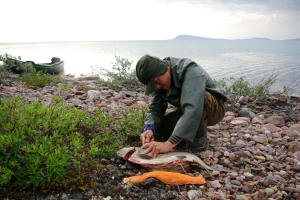
Thanks. Seems like a wonderful place.
Good day! I could have sworn I’ve visited your blog before but after looking at some of the posts I realized it’s new to me.
Nonetheless, I’m certainly delighted I found it and I’ll be book-marking it and checking back frequently!
Wow! Looks like an amazing trip, and you guys are clearly some intrepid (brave, strong) paddlers! 🙂 Thanks for sharing your story!
Thanks Teresa!
It was an amazing trip indeed.
Hi guys, my name is Bruce from America, Texas to be precise. Great Bear Lake is my ultimate bucket list destination. I’m curious, what would you say the roughest (big waves) it ever gets on that lake? I would think close to Lake Superior as it seems to run from west to east. Were you ever scared for your lives while up there? I’m sure there have been some accidents up there with water that big. Thanks so much for taking my questions, and am glad that you were ok.
Thanks,
Bruce
Hi Texas Bruce, Great Bear Lake is fantastic – cold, clear and very deep. Very few go up there. There are a few fishing lodges and one (native) village. The waves are scary, the roughest we have seen are probably 5-6 ft. You lose sight of the other canoe in the troughs. The problem is that the waves persist days after the wind has died down. So you have to patiently wait them out.
Cheers! Johan
Hi! My name is Peter Piskorski (Salmo Lures company founder). Together with a group of friends – Polish anglers, we are looking for an idea for another fishing trip in 2022. The main goal would be lake trout and pike. We have already fished in a few lakes in Canada (also Great Slave) and now we would like to try at famous Great Bear Lake. Maybe some of you can recommend a remote fishing camp or guide service that would organize such an expedition. Time – 6 – 7 days June / July, 4 – 6 people (2 – 3 boats), lodge accommodation or tents, all inclusive or self service. Thanks in advance for any hints!
Hi Peter! Hmm, interesting. The main (only?) organizer on GBL is Plummer’s, they have a few smaller satellite camps around the lake that you can fly out to. They have very nice accommodation and gear to rent. However, I believe they start their operation in July, as the lake still might be frozen in June. With the exception of a few river mouths, there is no pike in GBL as it is too cold. If you want pike you need to be further south. Walleye (pickerel) can be found in the nearby area.
Thank you buddy! Of course I know Plummers. Unfortunately they sold out all dates till the end of August. I believe for pike is too late. GBL is not that far from GSL so I think conditions for pike are more or less the same. Two years ago in 6 days we caught over 2000 pikes and 198 over 100cm in GSL not far from Yellowknife. ;o)
Wow! That’s a lot of pike. Our dream fish is Inconnu. We have seen schools of them on Mackenzie, huge 20+kg fish at the surface. But so far we have never been able to catch any. Very frustrating when they are all around but don’t bite on anything… Could be a challenge for your company to design a lure that works? 😉
Really – they did not bite any lure? Strange. I did not try to catch inconuu. I was sure that this fish is always very aggressive ;o) Could be great to try my lures for this clever creature!
You can look at my story of our first trip to GSL in 2015. Sorry – this is in Polish but at least you can look at the pictures ;o)
https://www.ppprofishing.com/content/wielkie-jezioro-niewolnicze-szczupakowy-raj